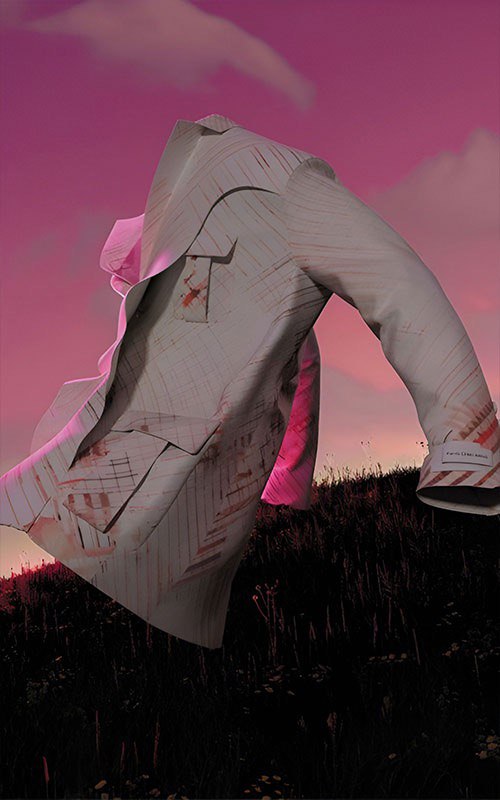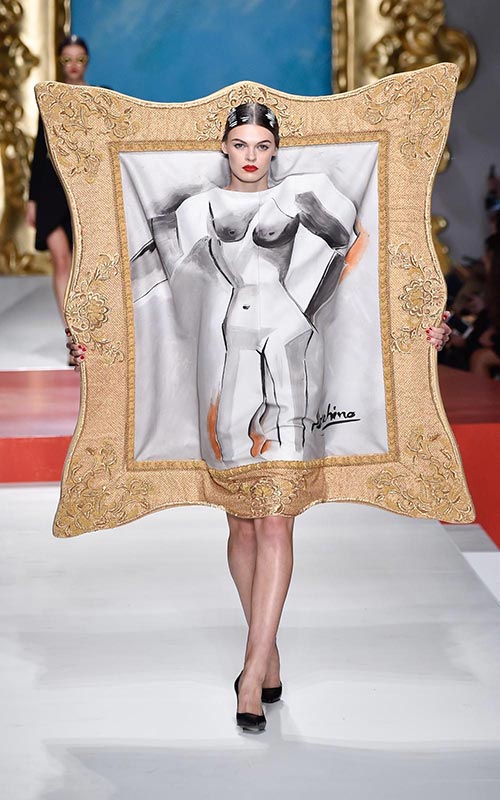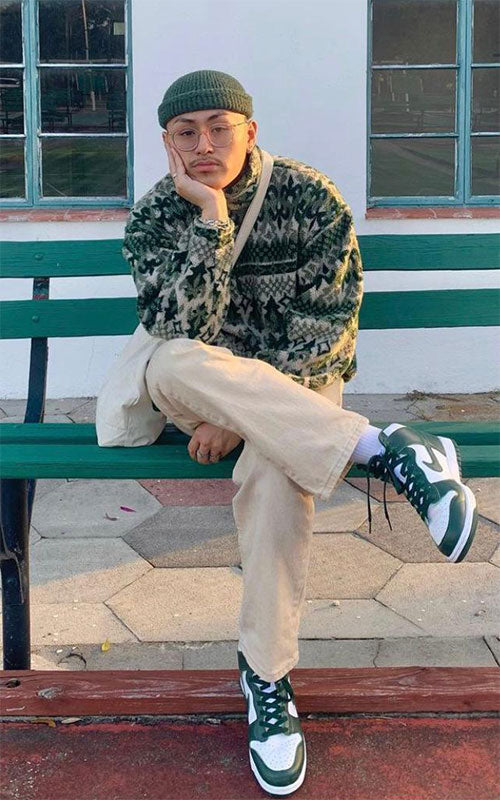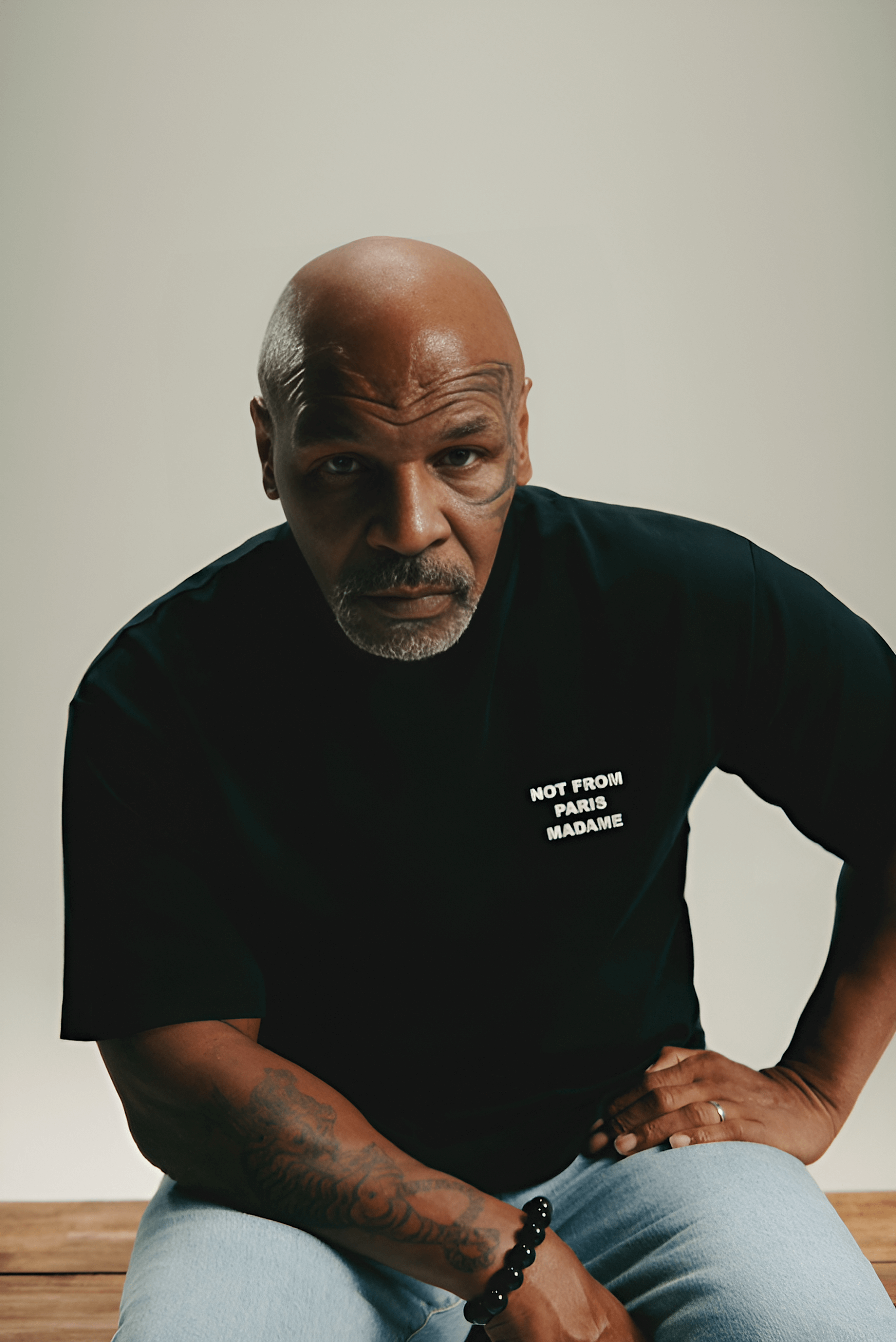How The Metaverse Is Changing the Fashion Industry


The Relationship Between Fashion and Art

Everything You Need to Know About Nike Dunk

Drôle de Monsieur Teams Up with Mike Tyson for ‘Not from Paris Madame’ Film
The internet has changed every aspect of our lives. From how we work to how we interact with each other – and even how we order our groceries. It was only a matter of time before the digital world merged with the fashion industry. Enter the metaverse. Social media across the board is exploring the potential of virtual realities to create immersive experiences that enhance the user experience.
While 3D movies and games have been around for several years, the fashion industry is now leaving its mark on the metaverse. The metaverse is making us all look at fashion with new eyes. Understanding the metaverse – and how the fashion industry is exploring it – is difficult. It’s new ground that every designer is experimenting with in their own way.
Although the metaverse is most associated with the tech industry, as Facebook has recently re-branded to ‘Meta’, it’s slowly expanding within the fashion industry. Mark Zuckerberg even introduced Meta by showing himself changing the outfit of his avatar.
Millennials and Gen Z are leading the way with the fashion industries transition from in-person events to virtual realities. They’re the generation that has grown up with their online avatars – everywhere from Club Penguin to Stardoll and Facebook. They’re now buying designer clothes for their Roblox

So, how is the metaverse changing the fashion industry? The metaverse is the next evolution of the internet. If the first stage was to provide us with information, the second stage was to allow us to connect across borders. The third stage of the internet – the metaverse – is about immersing ourselves in the virtual world through our avatars.
This guide breaks down the different ways that the metaverse is finding its way into fashion – changing the way we shop to how designers present their shows at fashion week.
How the metaverse is changing how we shop
When the pandemic happened, we relied on technology even more to stay connected to the outside world. Gone were the days when we could stroll into a department store and try on clothing. As online sales hit a record high, retailers tapped into the metaverse to compete to offer their customers the best shopping experience.
Utilizing the metaverse meant that brands could offer their customers new ways to experience clothing only. From getting an in-depth 360-degree view of the clothing to being able to ‘virtually’ try on clothing. These fashion brands are utilising the technology originally made popular by beauty brands before the pandemic who used AI technology to allow customers to try on makeup through their smartphone cameras.
The metaverse offers the fashion industry the ability to allow their customers to try on and see the garments they’re interested in before hitting ‘add to cart’. Ralph Lauren – one of the world’s most recognisable fashion brands – recently opened a virtual store on Roblox. The platform has almost 50 million active users, allowing virtually anyone to access virtual Ralph Lauren garments within just a few clicks.

While a typical Ralph Lauren comment might set you back several hundred dollars, its Roblox store offers virtual products from as little as $5. With our digital lives being just as important as our physical experiences, it’s no surprise that the metaverse is the next up-and-coming shopping destination.
Morgan Stanley predicts that the metaverse will allow luxury brands to expand their markets by 10% by the end of the decade – worth more than $50 billion in additional revenue.
The next generation of influencers
YouTube, Instagram, and TikTok have drastically changed the world of marketing. Gone are the days when celebrities were the go-to choice for brand ambassadors. The power of social media meant that ordinary people could grow a community that valued their opinion just as much – if not more so – than their favourite celebrities.
Fashion brands now work closely with influencers and bloggers, putting them at the front row of Fashion Week and even creating collaborations with them. But it’s not just humans who are becoming influencers.
When Lil Miquela hit the influencer scene, she quickly went viral. Many of her followers questioned whether she was real or heavily filtered for a digital look. In reality, Lil was a persona created by an L.A. start-up called Brud. Lil Miquela is the first CGI influencer and has over 3 million followers.
The fact that Lil Miquela is a “19-year-old Robot living in LA”, instead of being a normal person, doesn’t seem to discourage her legions of followers. Her posts get tens of thousands of likes and she’s featured in campaigns for Calvin Klein – alongside the likes of supermodels like Bella Hadid.

The metaverse now gives designers and the fashion industry the option to create their own influencers who won’t come with a six-figure price tag for every post. While no designer is yet to follow this path, it’s clear that virtual influencers are about to become more common on our social media feeds.
How fashion is entering the world of gaming
Our digital presence is getting more important than ever. How we present ourselves online – and our virtual persona – is getting a makeover. Now your digital avatar can wear the same outfits and designer accessories that you wear. As digital games become a new way for people to interact with each other, our avatars are getting a stylish wardrobe of their own.

Louis Vuitton was one of the first luxury brands to enter the world of gaming. In 2019, they created a series of skins for the popular ‘League of Legends’ game that allowed users to buy clothing and accessories for as little as $170 up to $5,000. Balenciaga has also created fashion items that can be purchased within the game for Fortnite.
It's easy to think that your digital avatar would be able to pay a lower price tag for their virtual accessories – but that isn’t always true. Gucci’s recent collaboration with Roblox saw their Dionysus bag being sold for 350,000 Roblox – valued at around $4,000 – making the digital bag more expensive than its physical equivalent.
The ‘video skins’ market is expected to be valued at $40 billion a year and is quickly growing.
It’s not just luxury brands that are looking to throw their hat in the ring. Athleisure brands are quickly trying to lay claim on their space within the metaverse. In December 2021, Nike acquired RTFKT, an innovative brand that creates “next generation collectibles that merge culture and gaming”.
This acquisition was another step forward in Nike’s plan to transition to a digital brand that sits at the crossroads between culture, creativity, gaming, and sports. Nike has gone beyond being an activewear brand – it’s a digital and lifestyle brand. RTFKT x Nike represents the extension of Nike’s digital presence and what they offer their customers within the metaverse.

RTFKT was launched in 2020 by a team of creatives that create exclusive products and experiences using the latest innovations – from blockchain authentication to NFTs and augmented realities. The brand is famous for its virtual sneakers – bringing together the world of gaming and fashion. This acquisition marks the first partnership of its kind between a digital fashion brand and a household name like Nike.
During the next few seasons, we can expect to see Nike expanding RTFKT to the same heights as its other brands, such as Converse. This acquisition allows Nike to compete against Adidas as their activewear rival recently announced partnerships with several metaverse brands, including Bored Ape Yacht Club.
This acquisition isn’t all that Nike is doing to step into the digital world. Nike unveiled its digital space, ‘Nikeland’, on Roblox in November 2021. They also grabbed the patent for ‘CryptoKicks’ in December 2019, showing that Nike’s first steps into the metaverse are part of its long-term strategy.
Nike wasn’t the only brand making a metaverse announcement at the end of 2021. In December, Adidas announced its partnership with Bored Ape Yacht Club. At the same time, the athleisure brand also announced partnerships with Gmoney, an NFT influencer, and Punks Comics, an unofficial Ethereum project.
As part of the partnership, Adidas has purchased a Bored Ape NFT avatar, creating a character named ‘Indigo Herz’. The brand gave a sneak peek at the Ape NFT on their Twitter feed – complete in an Adidas apparel look. The deal involved Adidas’ purchasing of Bored Ape’s NFT #8774 for $156,000.

These partnerships show that Adidas is going head-first into the metaverse. We wouldn’t be surprised to see designs inspired by the Bored Ape x Adidas collaboration hitting stores in upcoming seasons. As part of this extended collaboration, Punks Comic announced that the character would feature in their NFT comic.
Within the NFT world, Bored Ape is just as recognisable as Adidas is within activewear. The brand has created over 10,000 unique avatars that have gone on to sell for up to millions of dollars on the secondary market. Since launching in April 2021, Bored Ape has generated over $1.3 billion in secondary trading.
You’ll have celebrities like Post Malone and Jimmy Fallon using these avatars on their social media feeds. Adidas have also previewed an upcoming collaboration with The Sandbox, an Ethereum-based metaverse game.
The Metaverse at Fashion Week
With each Fashion Week, we’re seeing new ways that brands are using the metaverse to stand out from the competition and create an immersive runway experience. Gone are the days when you need a ticket to be front row at fashion week.
In March, Decentraland is hosting the first Metaverse Fashion Week – inviting dozens of brands to present to thousands of visitors who will attend virtual music sessions and wear digital clothing as they experience virtual shows. This virtual fashion week will have everything that you expect from Paris, New York, and London.

Hugo Boss is one of the most recognisable brands taking part – using Metaverse Fashion Week to offer the option of buying physical and virtual clothing. While we’re still waiting on other brands to be announced, it’s clear that contemporary, luxury, and up-and-coming fashion brands are all interested in the potential of the metaverse to open fashion week to all.
Decentraland plays to have virtual models appear on the catwalk and allow attendees to purchase clothing and accessories for their avatars. While anyone can sign up for the Metaverse Virtual Fashion Week, you’ll need to open an Ethereum wallet to make purchases for your avatar.
Digital shows for fashion week are nothing new. In 2020, Balenciaga released their Fall/Winter 2021 collection through the ‘Afterworld’ video game. It allowed players to go through the game and explore the collection through avatars wearing the clothing. The game took users from a Balenciaga store and into a secret rave in an experience that could rival that of Alice in Wonderland.
Fashion brands and NFTs
First, it was cryptocurrency, then it was NFTs. Several luxury brands are already experimenting with the potential of NFTs (non-fungible tokens) – including Dolce & Gabbana, Louis Vuitton, and Burberry.
The British brand has begun mining for NFTs with its chief marketing officer, Rod Manley, describing how the brand is “able to unlock genuine value for the gaming community by encouraging players to interact with our brand in an environment that celebrates art, design, and exploration”. According to the Blankos Twitter account, the fashion brand’s NFT sold out in record time.
Louis Vuitton took a different approach to its NFTs. The French fashion house utilized NFTs as a way to celebrate its 200th anniversary. They released its ‘200 Anecdotes’ game that featured a range of 30 NFTs. The brand collaborated with Beeple, one of the leading NFT artists, to create 10 of these. Unlike the Burberry NFTs, these NFTs only exist within the game.

Dolce & Gabbana took a halfway approach between what Louis Vuitton and Burberry chose. They worked with Polygon to create NFTs on the platform that could also be transferred across to different platforms and virtual ‘worlds’.
NFTs and the metaverse are also giving brands a new way to engage with younger generations. Rebecca Minkoff has been experimenting with NFTs as a way to promote the charity ‘The Female Founder Collective’. Minkoff sold 400 virtual garments in less than 10 minutes through The Dematerialised, a virtual marketplace.
Feng Chen Wang and digital presentations
One of the first fashion designers to explore the potential of the metaverse was Feng Chen Wang. This Chinese-born, London-based designer is at the forefront of the industry, bringing East and West together, as well as the physical and virtual worlds. Feng describes her distinctive aesthetic as being “future-modern, authentic, and multidimensional”.
As a designer that draws on her Chinese heritage, while creating functional unisex clothing, it’s no surprise that Feng is using the power of the internet to create a next-generation brand.
In her Spring/Summer 2017 collection, Feng explored what it was like to meet by chance during the digital age. These chance connections – like the ones we make online – acted as the muse for the collection. Every design took its inspiration from the world of side-swipes and double taps.
Flashforward to her Pre-Spring/Summer 2022 collection and Feng showcased her latest designs through a digital presentation. The presentation – entitled “An Ode to Community” – evoked the spirit of the brand. It was unique in the fact that it used a digital presentation to tell the story of human connection – plenty the virtual with the physical.
While the pandemic has turbo-charged the move to digital presentations, brands across the fashion industry are taking it in their stride.

The future of the fashion industry and the Metaverse
So, where is the metaverse taking the fashion industry? It’s difficult to predict the future but one thing that’s for sure is the blurring of lines between the virtual and the physical.
Digital 3D assets will continue to become even more popular. Games, as varied as Roblox, Sims, and League of Legends, are offering designer clothing for your avatars. With virtual reality about to make its way into social media, don’t be surprised if your social media avatar will soon be wearing a Gucci scarf or a Ralph Lauren blouse.
The potential of the fashion industry within the metaverse is unlimited. One thing that’s for sure is that it’s going to bring fashion brands closer to their customers than ever before. You won’t need to be a celebrity to attend fashion week and you’ll be able to shop virtually in a designer store within just a few clicks.
The next generation of influencers might not be Tik Tok stars but curated virtual robots that allow brands to create their ideal influencer. Don’t be surprised when you see brands begin to promote NFTs as the most exclusive products in their range.
The metaverse is bringing us all closer together – breaking down the barriers around the fashion industry and creating the most immersive experience possible. While Gucci, Balenciaga, and Louis Vuitton have already laid their claims to the metaverse, more brands are making the transition.
The future of the fashion industry is mixed – just like the rest of our lives. Gone are the days of doing everything in person. Our digital avatars – and their fashion – is just as important as what we wear in person.
